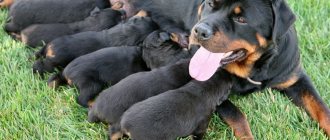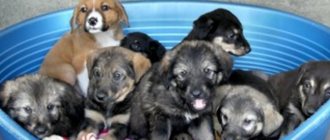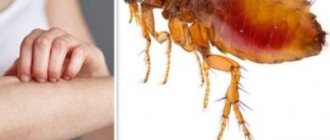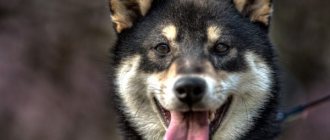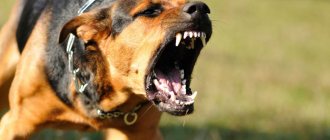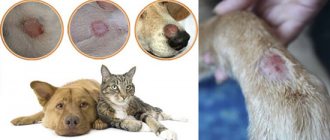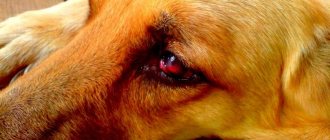Main characteristics
| Breed parameters | |
| Country of origin: | Italy |
| Weight of the breed: | Males: 3–4 kg, females: 3–6 kg |
| Height at withers: | 20–25 cm |
| Temperament: | active |
| Wool: | American - short, English - long |
| Role in human life: | companion |
| Breed group: | decorative |
The Maltese is a good-natured small dog, a favorite of the family and others. He is distinguished by excellent health and a cheerful, cheerful disposition. Until the end of his days he remains a puppy at heart.
Breed standard
Maltese (this is the real name of lap dogs of this species) is a small white dog with a slightly elongated body. The entire body is covered with long flowing white hair.
At the withers it reaches only 20-25 cm , the length of the body is 30-35 cm . Dogs weigh up to 3-4 kg , but the American standard assumes the weight of an adult is no more than 3 kg, and better - about 2 kg .
The look is wary, very intelligent.
The head is quite wide, the distance from the stop (the transition from the forehead to the muzzle) to the middle of the cheekbone is approximately equal to the distance from the stop to the tip of the nose, thus half the length of the head is narrower than its width.
The eyes are oval, dark brown, the outline is painted black.
The ears are long, close to the head, and covered with thick hair that blends in with the dog’s overall coat.
The neck is of medium length, the chest is clearly defined and has good angles.
The front legs are short and straight, the loin is short, the back is straight.
The tail is set fairly high and curved over the back.
The movements are light and free, not tangled, the paws are parallel, not too close, but not too wide.
The coat is flowing, quite long, but does not hinder movement; there is no undercoat.
The color is pure white, without any admixture of yellowish or lemon.
Description of the breed
The Maltese (Maltese) is a glamorous small dog that is very easygoing, devoted to its family and very friendly. However, despite its very modest size, the Maltese is fearless, an excellent search engine and participant in various sporting competitions. These animals are very cheerful, easy-going, love walks in the fresh air and love to be close to their owner.
Visually, the Maltese is very reminiscent of soft toys. The gait is light, graceful, silent. The fur is long, covering the entire body of the animal. To enjoy this unearthly beauty, you need to properly care for your dog and regularly visit grooming salons. After all, only professional hands can maintain the beauty of a little cherub at a decent level.
Despite the rather thick coat, representatives of this breed are not prone to constant shedding. Against the background of thick, white and silky hair, deep brown, almost black eyes and a small black nose stand out in contrast. This is a sweet and smart dog that is immensely devoted to its owner. One of the few decorative breeds that feels comfortable in any conditions (except for outdoor conditions). Neither a small one-room apartment nor luxurious mansions will bother her.
The lapdog is easy to train, gladly follows any commands, successfully participates in agility and has watchdog skills. They are very active, mobile and easily adapt to any conditions. During the training period, puppies behave obediently and love rewarding treats.
Maltese are companion animals, so they do not like to be alone. When left alone for a long time, they become sad and may refuse food and water. Therefore, it is important to give your pet as much attention as possible.
There are two types of Maltese: English and American. The American type is distinguished by its small (mini) muzzle and short hair. The shorthair variation fully corresponds to the main characteristics of the breed. Life expectancy: 15-18 years.
History of the breed
As research results show, this dog breed with a funny haircut is one of the most ancient. Charles Darwin himself wrote about the Maltese variety, claiming that this breed of dog left its mark as early as the 6th century BC. Today it is reliably known that on one of the ancient Greek vases dating back to approximately 500 BC. BC, which was discovered during archaeological excavations, depicts an animal of miniature size, which is very similar to the Maltese.
It should also be noted that in ancient chronicles and many primary sources the Maltese is referred to as a Melite dog. These pets received this name from the Greek island of Melita, which later became known as Malta. If many factors are to be believed, this dog breed not only originated in Malta, but there is also an Egyptian trace in its breed.
To date, during excavations in modern Egypt, many different writings have been discovered, which depict a white Maltese dog in the life of the upper strata of society. Therefore, experts do not exclude the possibility that this breed of dog appeared in Malta as a result of well-established trade relations between Africa and Europe.
According to many researchers, a Maltese dog with a funny haircut has always been considered an excellent gift in the highest circles of the aristocratic and royal classes. At one time, this breed of dog was more popular even than silk and emeralds. In Greece, many women preferred these favorites. The Maltese arrived in England with traders and legionnaires from Rome around 55 BC. e.
The first exhibition, where a Maltese dog with an interesting haircut was present, took place in 1862 in London. Fifteen years later, a similar exhibition was held in New York. Also, some researchers believe that the Maltese lived in France until the 20th century. Since Queen Mary Stuart of Scotland at one time ordered pets of this variety from France. Naturally, for this reason, interest in this dog breed has only increased.
It should also be noted that the Maltese was one of the favorite breeds of Queen Victoria of Great Britain. Her Maltese named Chico was the Queen's pet for many years. The first two representatives of this dog breed were brought to the queen from the Philippines.
Since at that time the voyage had lasted more than one month, the animals, upon arrival in Great Britain, had a rather unsightly appearance - their wool was crumpled, therefore, according to the captain’s decision, the Maltese was not presented to the queen, but was given to his brother, who was breeding mastiffs. As a result, the breeder began breeding these pets and he practically managed to form several generations of animals himself (the author of the video is Cool Collections).
There is no exact information about the origin. It is known that the breed is very ancient, and dates back to the period when small dogs lived on the island of Malta - Melites (in honor of the island). Some dog experts believe that spaniels and toy poodles participated in the process of breeding the modern Maltese.
There is evidence that the Maltese dog appeared more than 6 thousand years BC. Statues of these small dogs were found in the tomb of Pharaoh Ramses II. Famous Greeks also erected tombs in honor of their deceased beloved Maltese. Some Greek pottery from that time preserves images of these royal dogs.
Maltese were also often presented as expensive diplomatic gifts to rulers and nobles.
We suggest you familiarize yourself with: Broiler duck breeds
The beauty and cheerful nature of this breed have made it a human companion since pre-Christian times. The Maltese were so famous and popular that they were depicted in their paintings by Titian, Goya, Veronese, Rubens and other painters. Owning such dogs was extremely prestigious, and only representatives of the upper class could afford it. That is why breeding of the breed has always been under careful control.
Queen Mary Stuart of Scotland received Maltese dogs from France. Queen Victoria of England had a dog of this breed named Chico, and in 1841 she was given a gift of two more Maltese from the Philippines.
Now the Maltese breed is widespread in the USA, England, Canada, Japan and Italy.
Character and temperament
Dogs of this breed are kind, sympathetic and overly affectionate. They are infinitely devoted to their owner and the entire family as a whole. Pets have been and continue to be the best companions, especially for the elderly and people with disabilities. They have an ambiguous attitude towards children and may show aggression. Families with very young children should be careful. Children over 14 years of age are treated as adults by pets.
Dogs behave differently with others. Sometimes they are great friends with individuals two or three times their size, and sometimes they are hostile to everyone. It all depends on the individual character of the animal. They get along well among their own, therefore, you can safely start a couple.
By nature, Maltese are active and playful. They love long walks, active games with a ball, and forays into nature. They will be happy to support you in your sports endeavors and will confidently mince next to you during a short jog. Running long distances with such a dog is fraught with consequences.
Lapdogs respond well to training and are happy to follow commands. Excessive pampering of your pet can lead to willful behavior.
Breed characteristics
As for the description and main characteristics of the Maltese dog breed standard and appearance, you will learn about this further.
According to the standard, the Maltese is a small animal, completely covered with long and silky fur. Despite the small dimensions, the main characteristic of the standard is the energy of the animals. Maltese puppies, like adults, have a medium-length skull that is proportional to the body. If you look at the head from above, it will be slightly rounded, with a moderate transition from the forehead to the muzzle.
In accordance with the standard, the Maltese has hanging ears that are set quite low, which are also covered with thick fur and fit tightly to the skull. The standard implies the presence of fairly dark and large eyeballs, located not very widely on the face. It should also be noted that thanks to the black edges of the eyelids, the Maltese's facial expression becomes even more wary. The face itself is of medium length, not sharp, but slightly tapering.
We suggest you read: Tips for choosing a cage for a hamster
Another characteristic of the standard is the black nose. Dogs have a scissor bite. The dog holds his head straight because his neck is set high. The body of the animal itself is compact according to the standard, the shoulder blades are set obliquely, their structure is strong, pressed to the body. Maltese have a straight back with rounded ribs. Their chest is quite deep, and the tummy itself is slightly tucked up (the author of the video is All about Pets).
As for the tail, its standard characteristic is long, silky hair. The paws of Maltese dogs are characterized by thin bones and fine fur. The front legs are straight in shape, with strong wrists. Regarding the hind ones, they are quite strong, small and round in shape, with black pads. It is allowed to trim the fur on the paws so that the Maltese has a more attractive appearance.
Maltese dogs have a coat without undercoat. The coat is long and silky, straight, close to the body and hanging down on the sides almost to the ground. If the animal is not trimmed, the fur may even reach the ground. Another characteristic of the standard is its snow-white color. If the animal's ears have fawn or lemon tints, and also if the dog has curly or wavy fur, then this can be considered a fault and a disqualifying defect.
As for the sizes, the sizes of these pets range from 1.8 to 2.7 kg, the maximum weight allowed is up to 3.1 kg. In general, when examining an animal, general appearance is more important than size. When moving, the dog moves smoothly, easily and gracefully, relatively quickly. While running, the front legs are carried forward, and the hind legs move in a straight line.
Character
Everything is clear with the standard, now let's move on to the description of the character. Maltese puppies are considered one of the cutest small pets. According to reviews from owners, even adults are quite affectionate, cheerful and playful. These pets are full of energy and are characterized by periodic bursts of activity. If you watch the video below, you will notice that the dog can simply run in circles at high speed for no reason.
These pets always love to spend free time with their owner, they are great as a first pet. Maltese are loyal animals, and despite their small size, they will always act as a human guard. If the lapdog senses danger, it will protect its owner. As a rule, when danger arises, the Maltese barks very strongly and can even bite the enemy.
As for intelligence, these pets are quite smart; they can be taught all sorts of commands and tricks without any problems. If you don't take the time to train, you can end up with a spoiled and stubborn animal. It is better to get Maltese dogs if there are already adult children in your house, since kids can easily injure them. It is advisable that the child can handle the dog correctly.
In relation to other pets, according to reviews, Maltese are in most cases friendly. They do not tolerate loneliness well, as they become very attached to their owner. Maltese will be an excellent option for older people, as well as those who live in small apartments. But remember that without education, these animals can feel superior to their owner, which will later be very difficult to correct. Therefore, we recommend training Maltese dogs from puppyhood.
Maintenance and care
Despite their thick and abundant coat, lapdogs are not prone to constant shedding. They shed, like most dogs, seasonally. However, this does not mean that they do not require regular brushing. Their fur needs daily care, as it constantly gets tangled and tangled. Particular attention should be paid to water procedures. It is at this time that the coat is most susceptible to tangling. Modern groomers recommend using special shampoos and conditioners during bathing for easy combing.
Conditions for keeping at home
To properly care for your Maltese, you will need a special brush with a rubber base, several combs with fine and rare teeth, and also a comb with very fine teeth to remove under-eye secretions.
A common problem for many dogs of this breed is eye stone deposits, so try to be careful to keep the fur under the eyes as dry as possible. It is recommended to use various lotions and soft powder-shampoo for this.
When combing your dog's fur, turn it over on its back and spray it a little with an antistatic agent, this will prevent possible hair breaks. Use a special brush to comb the fur on each paw, belly and chest; this must be done carefully so as not to scratch the rather delicate skin.
We suggest you read: Diseases of Scotch Terriers
It is necessary to regularly remove the hair between the paw pads themselves. It is recommended to trim the nails after you have purchased and dried the dog. When performing this procedure, be very careful not to touch the blood vessel passing through the claw. Also, do not forget to regularly shorten the claws on the fifth toes of the front limbs.
For complete teeth cleaning, use a children's toothbrush; this procedure must be done from the first day so that the dog gets used to it. Use a brush to clean out food debris and possible tartar deposits between your teeth; this should be done delicately.
Separately, it is worth mentioning the nutrition of the Maltese. It is advisable to give dogs of this breed only natural food or dry food. Some people may absolutely hate raw meat, while others simply cannot live without it. Dry food is ideal for complete nutrition, but it must be carefully and correctly selected so as not to cause allergic reactions and various kinds of disorders.
If you decide to feed your Maltese with natural products, keep in mind that it is necessary to add vitamins and various minerals to the food. It is recommended to feed puppies up to 6 months 4 times a day, after 6 months - no more than 3 times. Adult dogs usually eat 2 times a day. The optimal feed rate is 1 tablespoon per 500 grams of dog weight at one time.
back to the list of breeds
How to care for a Maltese dog, do they need a haircut, what kind of food should they have? You will find answers to these questions below.
Caring for a Maltese is not a particularly easy procedure, as these pets require quite a bit of time to care for. When grooming, pay special attention to the hair near the eyes - brown tracks are a big problem in dogs with white coats. There are special products for caring for the coat of white dogs.
Lapdogs need to be bathed regularly to keep their coat tangle-free. To avoid this, many owners, as reviews show, choose a haircut. If the haircut is as short as possible, this will greatly facilitate care. Today there are many haircuts for Maltese dogs.
This type of animal hardly sheds, so the owner will have to get rid of dead fur on his own, otherwise it will become tangled and tangles will begin to appear on it. The fur between the paws' claws should be trimmed twice a month. If you use hair conditioner, this will make combing easier, but the conditioner and shampoo should rinse off well.
After bathing, the dog should be dried with a towel and then used a hair dryer to dry it. Make sure that its temperature is low. Maltese do not need large active loads. It will be enough for her to walk along the street and play a little at home.
Loading …
Optimal diet
Proper nutrition plays an important role. Maltese are very allergic. The animal should be fed only balanced food.
Maltese food should include:
- beef or chicken meat;
- fish;
- rice and buckwheat;
- egg yolk (no more than once a week and it is better to give a quail egg);
- fruits, vegetables, greens.
The lap dog's food should also include fermented milk products. Many owners decide to feed their pet dry food. Dry food is the best solution for those who cannot constantly cook for their dog. As a rule, dry food contains all the necessary minerals and vitamins, so it is quite possible to feed your lapdog with such food.
Remember that the food an animal consumes plays an important role in its health. If you give your dog food, it is better to completely exclude natural food. In particular, giving smoked products and sweets to an animal is strictly prohibited. If you choose dry food, it should be of high quality and not cheap. Using cheap food, which is usually of low quality, will only harm your pet and negatively affect its health.
Health
Like all small breeds, they are too problematic in childhood. They are susceptible to hypoglycemia and are often injured. In adults, the tracheal cartilage often weakens, leading to difficulty breathing. In such cases, you can forget about the collar forever.
The most common diseases:
- Dislocation of the kneecap.
- Oral problems (dentistry).
- Glaucoma.
- Cryptorchidism.
- Hydrocephalus.
- Yeast dermatitis.
- Heart valve defects.
- PRA.
They are predisposed to congenital liver abnormalities and uncontrollable shaking throughout the body (trembling syndrome). Both pathologies are very serious. In the first case, an expensive operation is possible; they try to combat the second pathology with medication.
Theses
- They have a good character, but are difficult to toilet train.
- Despite their long fur, they do not like the cold and freeze easily.
- Due to its small size and fragility, it is not recommended to keep the Maltese in families with small children.
- They get along well with other dogs and cats, but can be jealous.
- They adore people and are usually attached to one person.
- Purebred Maltese dogs live a long time, up to 18 years!
Photos of Maltese puppies
How to choose a puppy?
Choosing a puppy is always a difficult task. And it’s not even a matter of the pet’s gender, its color, size, etc. Many people don’t know where to turn and where to look for this little miracle of nature. There is no point in buying it second-hand or based on an ad on the Internet; you can get anything, just not what you saw in the photo on the Internet.
Before buying a puppy, it is best to visit an exhibition, get to know the breed better, and compare the pros and cons. If you have small children in your family, but really want a white fluffy puppy, then it is better to wait until the human child grows up.
As a rule, truly purebred animals can be found only in good nurseries that have been breeding them for many years. By purchasing your future four-legged friend in such places, you will be confident in his health, his origin and psyche. Price: 250-1300 USD
Size and weight of Maltese, puppies and adults (about the breed)
If there are angels in the dog world, it is undoubtedly the Maltese. It was not for nothing that the holy Apostle Paul kept, and there is written evidence of this, such a dog named Issa. He was a gentle, playful, unusually loyal dog. Only death managed to separate him from his owner. The holy apostle, yearning for his Issa, asked to paint a portrait of his little friend. The master portrayed the dog so well that it seemed that at any moment it would jump out of the frame and run up to the owner, demanding attention.
A few words about character
Actually, all Maltese representatives are distinguished by their beauty, playfulness, loving and brave heart. Yes, yes, despite their frivolous size, dogs of this breed are always ready to stand up for their owner and protect him from danger. At the same time, sitting in their arms, these aristocrats convey their confidence and calmness to the person. In a familiar environment, dogs are very cheerful, active, and friendly with the owner and his guests. They will never refuse to play and frolic. Just looking at a Maltese dog improves your mood, and communicating with it gives you a good boost of energy.
Appearance and dimensions
Snow-white silky long fur, black unusually expressive eyes. Whose heart will not tremble with tenderness from such beauty?! The small body is elongated, the head is set proudly, aristocratically.
Adult dogs weigh three to four kilograms, puppies are comparable in weight to kittens. As for height, the maximum for males is twenty-five centimeters at the withers, for their female friends - twenty-three centimeters. The length of the body is one third greater than the height at the withers. The dogs' back should be straight with the withers slightly raised. The standard for head length is six-elevenths of the height at the withers. The width of the head is greater than its length by half this same length. The oval skull is flat on top with weakly defined cheekbones.
The dog's charming muzzle makes up four-elevenths of the entire length of the head. A very beautiful horizontal nose with a black lobe and large open nostrils. The lips are black along the edges. For their small size, Maltese dogs have well-developed, fairly strong jaws. The dog's teeth are white and regular in shape. Particular attention is drawn to the eyes, smart, attentive, lively. The shape of the eyes is oval, the eyelids fit tightly to the eyeballs. The Maltese dog's eyes do not look bulging or sunken. The triangular ears are set high and slightly raised.
The straight neck has no folds in the skin. Even though the dog is covered with thick hair, its neck is clearly visible. The chest is quite spacious, the ribs are slightly convex. The tail, thin at the end and thick at the base, is set high and carried over the back. The tail forms a large arch over the back, sometimes falling to the side. The dog moves on rounded, fairly strong paws with black pads. The coat is luxurious, silky, shiny, without any curls or waves, and falls to the tips of the paws. There is no undercoat. A distinctive feature of the breed is its white coat. The palest shade of ivory is very rare.
Great friends
This is exactly what Maltese dogs will be like to their owners. Here we should add their great love for children. If there are other animals in the house, then small snow-white dogs will quickly get along with them. Frisky, inventive, but obedient, affectionate, fearless, Maltese dogs are perhaps better suited to living in apartments than other breeds. Give yourself a gift, get the most ideal companion and devoted friend.

